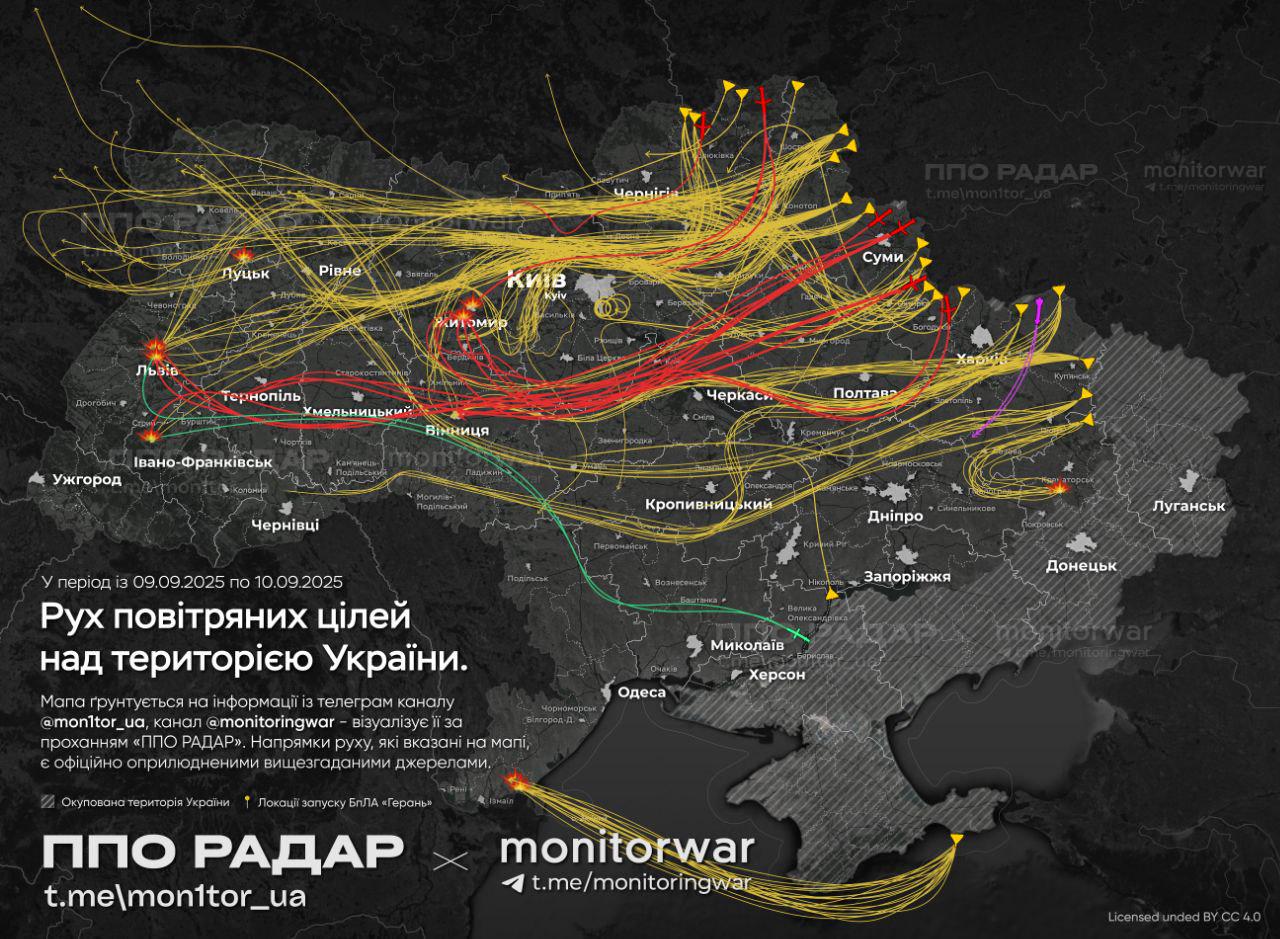Map of Air Attacks on Ukraine in 4 Months


David Chen
Data Visualization Specialist
David Chen is an expert in transforming complex geographic datasets into compelling visual narratives. He combines his background in computer science ...
Geographic Analysis
What This Map Shows
The map titled "Map of Air Attacks on Ukraine in 4 Months" provides a detailed visualization of the recent missile and UAV (Unmanned Aerial Vehicle) strikes that have targeted various regions within Ukraine. Over the past four months, Ukraine has experienced some of the most significant missile attacks, primarily using Kh-101, Kh-59, and Caliber missiles. Additionally, the map highlights the deployment of strike UAVs, which have been a crucial component of aerial warfare in this conflict.
This visualization not only marks the locations of missile impacts but also illustrates the trajectories of these attacks, giving viewers insight into the patterns of aerial assaults. The map specifically identifies key cities like Zhytomyr, Vinnytsia, Kalush, and Lviv as primary targets for missile strikes. Meanwhile, the UAVs have notably targeted areas including Poland, Lutsk, Lviv, Vinnytsia, and the regions of Donetsk and Odesa. The concentrated efforts on these locations indicate strategic military objectives that warrant further examination.
Deep Dive into Air Attacks on Ukraine
Air attacks have become a defining feature of modern warfare, and the recent escalation in Ukraine exemplifies this shift. The use of advanced missile systems such as Kh-101 and Kh-59 showcases the increasing reliance on precision-guided munitions in military operations. These systems allow for long-range strikes, enabling attackers to hit targets from a distance without exposing ground troops to direct confrontation.
Interestingly, the Kh-101 missile system has a range of approximately 4,500 kilometers, making it a formidable tool for striking deep into enemy territory. Coupled with the apparent strategic focus on urban centers, it highlights the devastating impact that air warfare can have on civilian populations and infrastructure. Notably, the cities targeted are not just military strongholds but also civilian hubs, increasing the potential for collateral damage and humanitarian crises.
The involvement of UAVs adds another layer of complexity to these air attacks. Drones have revolutionized warfare by providing real-time surveillance and precision strikes. They can be deployed rapidly and often at a fraction of the cost of traditional air strikes. The map indicates that UAVs have been employed not only against Ukrainian cities but also against locations in neighboring Poland, raising questions about the implications for international relations and regional security.
Moreover, the targeting of areas such as Vinnytsia and Lviv, both of which are crucial logistical and transportation hubs, suggests a deliberate strategy to disrupt supply lines and weaken the Ukrainian response capabilities. This tactic of targeting infrastructure is designed to create chaos and hinder the movement of resources and reinforcements.
Regional Analysis
Examining the regions affected by these air attacks reveals a pattern of targeted strikes that correspond with both military and civilian significance. For instance, Zhytomyr has been a focal point due to its proximity to Kyiv and its role as a logistical center. The saturation of missile attacks here could be interpreted as an attempt to weaken the Ukrainian capital's defenses by targeting its supply routes.
Vinnytsia, another key city, is strategically located in west-central Ukraine and serves as a vital junction for rail and road transport. The attacks on Vinnytsia underscore the importance of disrupting communication lines, which are essential for military and civilian operations.
Interestingly, the attacks on Lviv, a city known for its cultural heritage and proximity to the Polish border, indicate an effort to escalate tensions not only within Ukraine but also with its neighbors. This is particularly concerning as it raises the stakes for NATO and the European Union, which have been closely monitoring the situation.
In contrast, the Donetsk and Odesa regions have been a battleground for ongoing military engagements, making them more vulnerable to these aerial assaults. The attacks here further emphasize the ongoing conflict and the struggle for territorial control.
Significance and Impact
The implications of these air attacks are profound, affecting not only the immediate regions but also the broader geopolitical landscape. The use of precision munitions and drones reflects a shift in warfare tactics that emphasizes long-range engagements and minimizes the risk to personnel. However, this also leads to increased civilian casualties and widespread destruction, raising ethical questions about the conduct of warfare.
Moreover, the targeting of urban areas complicates humanitarian efforts and can lead to significant displacement of populations. As cities are bombarded, civilians are left to navigate the chaos, often leading to a humanitarian crisis that requires international intervention.
Looking forward, the trends indicated by this map suggest a continued reliance on air power in the ongoing conflict. As military technology advances, the nature of warfare may shift further toward remote engagements, making it imperative for policymakers and military strategists to adapt their approaches to conflict resolution and peacekeeping in the region. Understanding the geographical patterns of these air attacks is crucial for developing effective responses and strategies moving forward.
Visualization Details
- Published
- September 10, 2025
- Views
- 82
Comments
Loading comments...